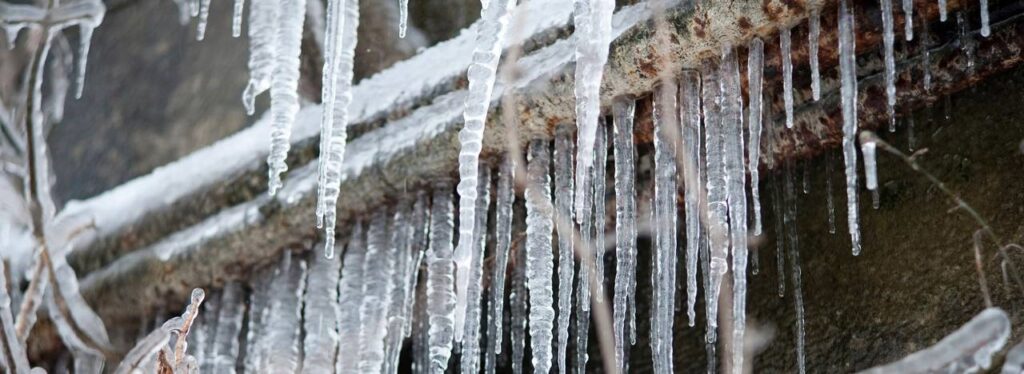Essential Methods for Avoiding Frozen Pipes in Cold Weather
Essential Methods for Avoiding Frozen Pipes in Cold Weather
Blog Article
Any individual seems to have his or her own theory about Preventing and dealing with frozen pipes.

Cold weather can ruin your plumbing, especially by freezing pipelines. Below's just how to prevent it from occurring and what to do if it does.
Introduction
As temperature levels decrease, the threat of icy pipelines rises, possibly bring about pricey repairs and water damage. Comprehending exactly how to avoid frozen pipelines is crucial for homeowners in cold climates.
Avoidance Tips
Protecting susceptible pipes
Cover pipes in insulation sleeves or use warmth tape to secure them from freezing temperatures. Concentrate on pipes in unheated or exterior locations of the home.
Heating strategies
Keep indoor spaces adequately warmed, especially locations with pipes. Open up cabinet doors to allow warm air to circulate around pipelines under sinks.
Exactly how to determine icy pipelines
Try to find lowered water circulation from taps, uncommon odors or noises from pipes, and visible frost on exposed pipes.
Long-Term Solutions
Architectural changes
Take into consideration rerouting pipelines away from outside walls or unheated areas. Add additional insulation to attics, basements, and crawl spaces.
Upgrading insulation
Buy top quality insulation for pipes, attics, and walls. Proper insulation helps maintain consistent temperatures and reduces the risk of icy pipelines.
Securing Outside Plumbing
Yard pipes and outside faucets
Disconnect and drain pipes garden hose pipes prior to winter. Install frost-proof faucets or cover outdoor taps with protected caps.
Understanding Icy Pipes
What creates pipes to ice up?
Pipes ice up when subjected to temperature levels below 32 ° F (0 ° C) for expanded periods. As water inside the pipelines ices up, it broadens, taxing the pipe walls and possibly causing them to rupture.
Threats and damages
Frozen pipelines can bring about supply of water disturbances, residential property damages, and pricey fixings. Ruptured pipelines can flood homes and cause extensive structural damages.
Indicators of Frozen Water Lines
Determining frozen pipelines early can stop them from rupturing.
What to Do If Your Pipes Freeze
Immediate activities to take
If you believe frozen pipelines, maintain faucets open up to eliminate pressure as the ice thaws. Utilize a hairdryer or towels soaked in hot water to thaw pipelines gradually.
Conclusion
Protecting against icy pipes needs aggressive actions and fast actions. By recognizing the reasons, signs, and safety nets, house owners can protect their plumbing throughout cold weather.
5 Ways to Prevent Frozen Pipes
Drain Outdoor Faucets and Disconnect Hoses
First, close the shut-off valve that controls the flow of water in the pipe to your outdoor faucet. Then, head outside to disconnect and drain your hose and open the outdoor faucet to allow the water to completely drain out of the line. Turn off the faucet when done. Finally, head back to the shut-off valve and drain the remaining water inside the pipe into a bucket or container. Additionally, if you have a home irrigation system, you should consider hiring an expert to clear the system of water each year.
Insulate Pipes
One of the best and most cost-effective methods for preventing frozen water pipes is to wrap your pipes with insulation. This is especially important for areas in your home that aren’t exposed to heat, such as an attic. We suggest using foam sleeves, which can typically be found at your local hardware store.
Keep Heat Running at 65
Your pipes are located inside your walls, and the temperature there is much colder than the rest of the house. To prevent your pipes from freezing, The Insurance Information Institute suggests that you keep your home heated to at least 65 degrees, even when traveling. You may want to invest in smart devices that can keep an eye on the temperature in your home while you’re away.
Leave Water Dripping
Moving water — even a small trickle — can prevent ice from forming inside your pipes. When freezing temps are imminent, start a drip of water from all faucets that serve exposed pipes. Leaving a few faucets running will also help relieve pressure inside the pipes and help prevent a rupture if the water inside freezes.
Open Cupboard Doors
Warm your kitchen and bathroom pipes by opening cupboards and vanities. You should also leave your interior doors ajar to help warm air circulate evenly throughout your home.

Do you enjoy more info about How to prepare your home plumbing for winter weather? Place a remark directly below. We would be pleased to find out your insights about this piece. Hoping to see you back again before long. In case you liked our post please don't forget to pass it around. Thanks a lot for going through it.
Call Report this page